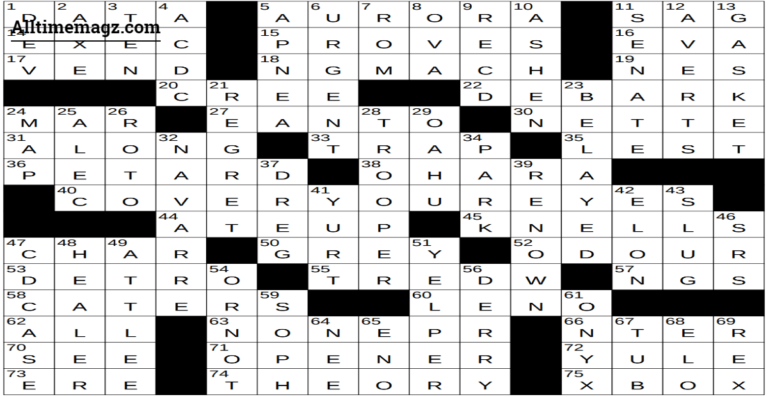Introduction to the New York Times Crossword Puzzle
The New York Times Crossword Puzzle is a beloved challenge for word enthusiasts and casual solvers alike. Each day, it offers a fresh blend of clues that can spark joy or frustration—sometimes both! Among the myriad of puzzles waiting to be cracked, one clue has stumped many: “Turkic Tongue NYT.” If you’ve found yourself scratching your head over this particular hint, you’re not alone. Let’s dive into what makes this puzzle so intriguing and discover how you can conquer it with ease. Whether you’re a seasoned solver or just starting out, there’s something satisfying about piecing together words and unraveling mysteries hidden in plain sight. Ready to tackle the Turkic tongue? Let’s get started!
The Clue: Turkic Tongue NYT
When you encounter the clue “Turkic Tongue” in the New York Times Crossword, it can spark curiosity. What language could this refer to?
The term “Turkic” encompasses a wide range of languages spoken across Central Asia and parts of Eastern Europe. It’s not just one specific dialect but rather a family of tongues.
With such diversity, it’s easy to feel overwhelmed when solving puzzles that reference these languages. Many solvers might think about Turkish initially, given its prominence. However, that’s only scratching the surface.
As you delve deeper into Turkic linguistics, you’ll discover many lesser-known languages that also fit under this umbrella term—one of which is Tatar. This language has rich cultural roots and is significant in regions like Tatarstan in Russia.
Keep an eye on context clues within the puzzle; they often lead you straight to the answer without extra guesswork.
Tips for Solving Turkic Tongue NYT Crossword Clue
When tackling the Turkic Tongue NYT crossword clue, start by considering the context. Think about languages from Central Asia and their historical significance. This can narrow your options significantly.
Next, remember that “Turkic” often relates to a group of languages rather than just one. Familiarizing yourself with popular ones can provide clues to the answer.
Use word patterns as a guide. If you have other letters in place, think about possible combinations that fit them well.
Don’t hesitate to look at related clues within the puzzle for hints or overlapping themes. Sometimes a neighboring answer illuminates the path forward.
Keep an open mind and be ready for those tricky twists! Flexibility is key when solving crosswords; it might lead you right to “TATAR.”
Word of the Day: TATAR
The final answer to the Turkic tongue NYT crossword clue is TATAR. This language holds historical significance and is spoken by the Tatar people, primarily in Russia and surrounding regions.
If you’ve been stumped by this particular clue, now you can confidently fill it in. Engaging with crosswords not only sharpens your mind but also enhances your vocabulary and knowledge of diverse cultures.
Keep challenging yourself with puzzles like these—they’re a fun way to learn something new while enjoying your favorite pastime!

